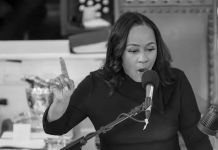Allergan’s (AGN) recent ploy to sell Restasis patents to the St. Regis Mohawk Tribe was perplexing to many. It also brought attention to Allergan’s near term drug pipeline and the dynamics of the $1.8 billion U.S. dry-eye market. U.S. lawmakers are scrutinizing Allergan’s patent transfer, and parsing the dry-eye market in the process. Allergan’s Restasis controls 70% market share, while Shire’s (SHPG) Xiidra controls over 20%.
I recently corresponded with Clotilde Houze’, Director and Head, Global Communications for Ophthalmics & Neuroscience, about the vagaries of the dry-eye market. Below is our correspondence and my interpretation.
Question 1: I understand that about 30 million people are effected by dry eye, yet only about 1 million have prescriptions. I intimated in the article that the dry eye market is currently underserved. Would that be an accurate assessment?
Clotilde Houze’
Dry eye is one of the main reasons people go see an ECP, and an estimated 16 million patients in the U.S. are diagnosed with dry eye disease.
My Interpretation
Oisnet implied the market size was 30 million, and only 1 million on prescription treatment. A U.S. drye-eye market of 16 million, with 1 million on prescription treatment (6% of the total market) would still imply the market is highly-underserved. Whether that is due to the price ($5,000 per regimen) or something else needs to be determined. I find it hard to believe that more people will not get prescriptions if the prices come down substantially.
Question 2: I understand the pricing for Restasis and Shire’s Xiidra is about $5,000 per year. If prices were to come down do you think more dry eye infecteds would buy prescriptions? At what price point would it take to potentially bring half the dry eye infecteds (15 million people) to get prescriptions?
Clotilde Houze’
We priced Xiidra® (lifitegrast ophthalmic solution) 5% competitively and in consideration of the innovation and value it delivers to help address unmet patient needs, as it is the first prescription medicine in the U.S. approved to treat both the signs and symptoms of dry eye disease.
My Interpretation
I previously assumed Xiidra’s entrance to the market made consumers better off since it gave them another choice. Based on the response from Clotilde Houze’ consumers might be better off because Xiidra actually treats the signs and symptoms of dry-eye; Restasis is indicated to help increase tear production. Xiidra’s pricing could imply Shire believes it has greater efficacy than Restasis, and its price should reflect it. If efficacy becomes a differentiator in dry-eye then potential newcomers like RegenerX (RGRX) or Aldeyra (ALDX) whose drugs are indicated to treat dry-eye could become potential disruptors.
RegenerX is a clinical-stage biopharmaceutical company focused on the development of a novel therapeutic peptide, Thymosin beta 4, or TB4, for tissue and organ protection, repair and regeneration. The company’s RGN-259, a preservative-free topical eye drop for regeneration of corneal tissues damaged by injury or disease, might capture investors’ attention. In July RegeneRx completed Phase 3 clinical trial testing for dry-eye syndrome:
RegeneRx Biopharmaceuticals, Inc. … a clinical-stage drug development company focused on tissue protection, repair and regeneration, today announced that its U.S. joint venture, ReGenTree LLC, has completed treatment of the last patient enrolled in its Phase 3 “ARISE-2” clinical trial testing RGN-259 preservative-free eye drops for dry eye syndrome (“DES”).
ARISE-2 is a double-masked, placebo-controlled clinical trial that enrolled approximately 600 patients in the U.S. and was initiated less than 12 months ago. The trial is designed to replicate the clinical results achieved in ARISE-1, a Phase 2b/3 clinical trial in patients with DES. Patient data will be scrubbed and validated prior to data lock and subsequent statistical analysis. ReGenTree will report the results as soon as practicable thereafter.
RegeneRx believes RGN-259 compares favorably to dry-eye competitors. At a recent investor conference RegeneRx implied RGN-259 [i] showed better efficacy than Restasis and [ii] reported no burning or stinging or diysgeusia (foul taste in mouth), unlike Xiidra:

RGRX is a highly-risky investment. It is currently in the development stage, and is hemorrhaging cash. In Q2 2017 it generated revenue of $13 thousand, but suffered operating losses of $303 thousand. For the first six months of 2017 its cash from operations was -$541 thousand. At the end of Q2 cash on hand was $243 thousand, down from $1.6 million in the year earlier period. It trades at $0.30 per share and has a market capitalization of less than $35 million.
If RegeneRx’s Phase 3 trials are not successful then the stock could crater and shareholders could lose their entire investment. Even if Phase 3 trials are successful the company is still at risk. Unless it raises more equity or seeks another investment partner, it could potentially run out of cash before bringing RG-259 to market. However, if RG-259 makes it to market the potential upside is tremendous. The following chart assumes RGRX captures 20% of the dry-eye market – similar to Xiidra’s current share. RegeneRx’s market share encroachment could potentially come at the expense of Restasis.

Revenue would be around $360 million. I assumed a 60% EBITDA, which is slightly less than Restasis’ presumed margin of 68%. At 15x EBITDA the enterprise value of the dry-eye franchise would be $3.2 billion. RegeneRx has a joint venture (“JV”) with GtreeBNT. The JV jointly owns ReGenTree LLC, which has commercial rights to RGN-259 in the U.S. and Canada. RegeneRx has a 42% interest in ReGenTree through the JV. Its 42% stake would equate to about $13 per share or over 40x its RGRX’s current share price of $0.30.
HC Wainwright has a $2 price target, but even that could be low given that only one other player would be indicated for the treatment of dry-eye. The risks are aplenty. RegeneRx’s clinical trial might not be successful; it if is, it might have to dilute the stock to garner more funding. The bet is [i] lose everything or [ii] potentially gain 40x your money 12 to 18 months after RGN-259 enters the dry-eye market. Given lawmakers’ questions surrounding a lack of competition in dry-eye, I am willing to take that bet.
That said, Aldeyra (ALDX) is another company of interest for the dry-eye market. It is a biotechnology company focused on the development of products for inflammation, inborn errors of metabolism, and other diseases related to generated toxic and pro-inflammatory chemical species called aldehydes. The company’s flagship product, ADX-102, captured investors’ attention last month when it showed significant improvements in a midstage trial for dry-eye. ALDX spiked 50% after the results were released, and after I began writing about the stock and the potential upside.
Aldeyra will not begin its Phase 2b clinical trial for dry-eye until the first half of 2018. This could involve studying a larger patient group and seeking the optimal dose that ADX-102 could be effective with minimal side effects. It recently raised nearly $27 million in a secondary offering. Prior to that, it had nearly $15 million in cash on hand. Aldeyra might have to engage in another capital raise or partner with a larger firm in order to bring ADX-102 to market. ALDX has a market capitalization of $146 million – this pales in comparison to a potential value of $3.2 billion at 20% share of the dry-eye market using “base case” assumptions.
Question 3: If generic Restasis enters the dry eye market how do you think it would impact Xiidra, if at all? Do you expect Xiidra to lose market share or lose pricing power? If “no” then why not? How do you think generics would impact Restasis sales?
Clotilde Houze’
We cannot comment on another company’s product or sales. Shire is pleased to have brought Xiidra, the first prescription eye drop indicated for the signs and symptoms of dry eye disease, to patients and eye care professionals in the U.S. As we’ve reported in quarterly earnings reports, we have continued to drive the expansion of the dry eye market in the U.S. and have confidence in the continued growth potential of Xiidra given the significant unmet patient need.
My Interpretation
According to the IMS Institute For Healthcare Informatics, from 2002 to 2014 the price of medicines was reduced by 51% in the first year generics entered the market. That implies revenue from Restasis could fall 51% on a reduction in pricing alone. Any loss of market share to generic rivals could cause its revenue to fall further. Restasis is highly-important to Allergan. Restasis represents 9% of revenue and an estimated 15% of its income. Its vaunted R&D pipeline might not bear fruit for several months. If generic rivals were to hurt Allergan’s Restasis franchise it could hurt revenue, earnings and its share price. AGN currently trades over 14x EBITDA.
In my opinion, generic Restasis could potentially bi-furcate the dry-eye market. Drugs – like Xiidra – indicated to treat the symptoms and signs of dry-eye might be able to command a premium price, while prices for Restasis and generic Restasis might have to be heavily-discounted to generate sales.
Question 4: In your opinion, would green-lighting generic Restasis be consistent with findings from the Senate Special Committee on Aging’s report on price-gouging within the drug industry?
Clotilde Houze’
We cannot comment on another company’s product.
My Interpretation
Lawmakers are already questioning whether Allergan’s patent transfer hurts competition in the dry-eye market. To enhance competition lawmakers could potentially work down dual paths. First, push for Allergan to be subjected to the same patent review criteria other drug makers face. If that includes a court hearing and an inter partes review, then so be it. Secondly, lawmakers could potentially push to fast track the approval process of other dry-eye drugs like RGN-259 or ADX-102.
New FDA commissioner Scott Gottlieb recently warned high drug prices were a public health concern that needed to be addressed by the FDA. This week the FDA gave the green light for Mylan (MYL) to produce a generic version of Teva’s (TEVA) Copaxone; some analysts had expected a copycat version to be delayed until 2018. Though RegeneRx and Aldeyra would not offer copycat versions of Restasis, a priority review of their drugs could be warranted given the attention the dry-eye market has gotten from lawmakers.
Conclusion
My correspondence with Shire opened my eyes to the vagaries of the dry-eye market. I now have a more clear thesis why [i] Allergan is so eager to protect its Restasis patents, [ii] Xiidra could continue to gain rapid share in dry-eye and [iii] clinical-stage dry-eye companies could receive more focus from lawmakers and investors. I currently rate AGN a sell. I currently and RGRX and ALDX as buys, though somewhat speculative. I believe the Fed’s balance sheet unwinding could create headwinds for the market. Once the unwinding takes effect I will take a closer look at SHPG.


















[…] only Xiidra is approved to treat the signs and symptoms of dry eye. RegenerX’s arrival could give it a leg up on both companies in terms of […]